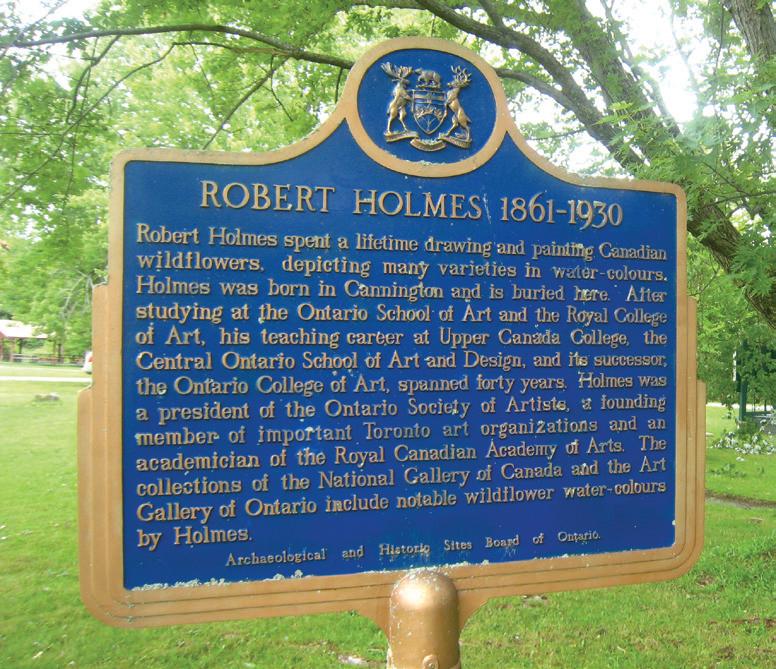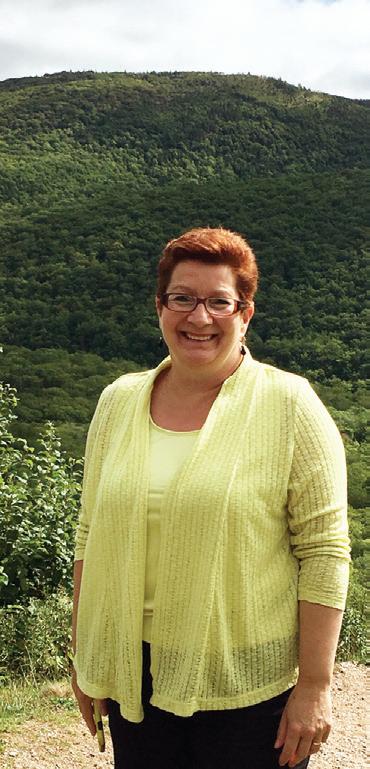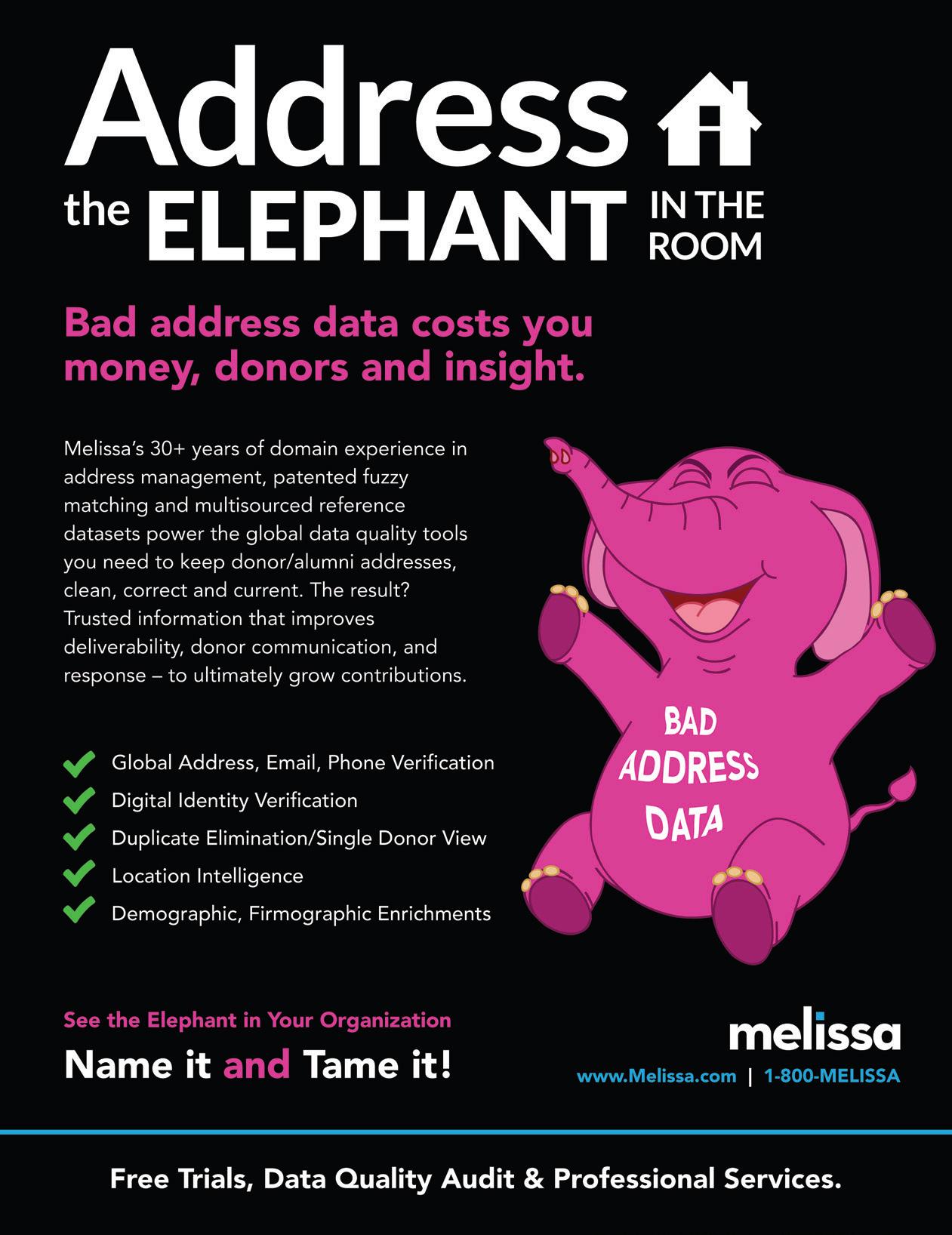
20 minute read
Will Fundraisers Finally Give Up on Personalization?
BY STEPHEN SHAW M astering the practice of personalization can seem overwhelming for marketers, leaving them to wonder whether the cost and effort is worth the trouble. But giving up on the dream of one-to-one marketing would be a shame.
When the era of Big Data dawned in the early 2000s with the explosive growth in web traffic, marketers swooned at the potential for personalized messaging: at long last, the dream of one-to-one marketing seemed within reach.
Yet as the years rolled by personalization remained a buzzword: the practice never caught up with the rhetoric. In a McKinsey survey last year, just 15 percent of CMOs claimed they were “on the right track with personalization”, stymied by a chronic lack of resources. Meanwhile, customers have come to view personalization as promotional gimmickry, urging them to add one more item to their online shopping cart.
In recent years, however, a new generation of AI-powered technologies has made it easier than ever for marketers to personalize the customer experience. Which is why in 2019 the Association of National Advertisers named personalization its “Marketing Word of the Year”. But then at the end of last year the research firm Gartner came out with the glum prediction that five years from now 80 percent of marketers will have abandoned their personalization efforts due to a lack of ROI or the “perils of customer data management”.
Personalization is hard to get right — even with the latest technology. But the reasons go far beyond the technical complexities of mastering personalization. It has more to do with marketers treating personalization as an afterthought. Viewed as a basic customer expectation, personalization becomes too important for marketers to give up on.
Being better
Look over the shoulder of any digital native absorbed in their phone these days and it is easy to see why marketers are struggling to connect with them. Headphones on, eyes glued to their screen, they live in their own personal media bubble, frenetically scrolling, tapping, texting and swiping, messaging their friends, checking their newsfeeds, sharing their pictures, maybe even watching a video or playing a game.
Jamming sponsored posts in between their social feeds or stuffing e-mail in-boxes with “best guess” offers or blitzing them with push notifications just forces them behind a privacy wall. The same is true of every other invasive tactic — web site pop-ups, infobars, digital ads, video pre-rolls, the list goes on. So people have learned to screen out the street noise — skip and block ads — “cut the chord” — insulate themselves from blatant commercial pitches — and seek sanctuary on ad-free media platforms.
As long as marketers persist in making campaigns the basis of their planning, their brand messaging will never be able to compete against the constant barrage of media distractions. Instead, they should find ways to be useful in the moment, whenever personalized assistance is needed, based on individual need and circumstances. And that means shifting the marketing mindset from “What can I sell you today?” to “How can I help you?”. As Seth Godin says, “Marketing is driven by better. Better service, better community, better outcomes”.
Personalization should never be considered synonymous with targeting. It should not be limited to “you may also like” recommendations. Instead, it should be woven into the fabric of the total customer experience, helping to make it “better”. Better at delivering advice. Better at answering questions. Better at making the experience seamless across devices and touchpoints. Better at delivering timely service and support. Better at anticipating customer needs.
Take the example of the calorie-counting mobile app LoseIt!. It stands out from the galaxy of weight watching brands by offering real-time analytical reporting such as pattern detection. For example, the app will figure out how specific food items influence the amount of weight gain or loss: “We’ve noticed that on days you incorporate muffins, you tend to keep your total calories lower”. The reason LoseIt has grown to 30 million members is its commitment to being “better”. Every new feature is born out of a singular crusade: to fight the obesity epidemic by making people more conscious of their food choices.
The biggest barrier to personalization is that so few companies take a holistic view of the customer experience. Most are still organized around product and channel silos. And while customer journey design can make it easier for people
to interact online, a different planning approach is needed to individualize the experience, making it more relevant and useful. Marketers have to give up transactional thinking (“How do we get a user to click and convert?”) in favour of asking, “How do we make the experience better for the user?”.
A unified experience
The first step in the process is to map out a “value matrix” which defines how the company will apply personalization in the service of customers. That matrix can then be used to prioritize the opportunities based on expected outcomes (such as higher satisfaction and retention).
For example, different treatment strategies can be applied to first-time versus repeat customers; frequent versus occasional users; single versus cross-category buyers; passive members versus brand advocates; as well as to different loyalty segments, lifestyle cohorts, demographic groups, and so on. The tricky part is coming up with the right set of nested segments (e.g. high value + long tenure + highly engaged + brand loyalist) deserving of their own personas. Rules can then be created to customize the experience for each segment, knowing their shared attitudes, beliefs, interests and habits.
At an individual level, the strategy should revolve around specific moments in time, when a timely intervention — say, a recommendation, an alert, a status update, a reminder, a newsfeed — can make the customer journey friction free. This is where personalization technology can play a huge timesaving role, relieving marketers of the heavy analytical load involved in generating the conditional rules (e.g., “if-then-else” statements, “and/or” logic). The toughest part, of course, is to ensure a unified experience, applying a consistent set of rules, regardless of the device or touchpoint.
Once the personalization strategy is set, marketers can move on to cross-channel planning, figuring out how to deliver the best possible experience based on everything they know about customers — their observed behaviour, stated preferences and implicit intentions derived from their web sessions (“How much time did they spend looking at that product page?”).
The website is usually the best place to start by showcasing the most relevant products or solutions according to the browsing history of repeat visitors and customers. That can be done by setting up dynamic blocks of content offering individualized product recommendations; swapping out generic text and images in the “hero carousel” to suit each persona type; streamlining the navigation to accommodate a particular segment; promoting relevant content based on reading history; and finetuning search results according to known interests.
By factoring in both shopping behaviour and historical buying habits, e-mail content can be fully personalized, informing subscribers of their loyalty status and privileges; introducing ancillary products related to a recent purchase; providing advance notice of local sales events; announcing new merchandise in their preferred categories; or letting them know how soon to expect a resolution to their service ticket submission. Similarly, a mobile app can use location data to deliver geofenced notifications; support in-store navigation; or use bar code scanning to provide on-the-spot product comparisons and ratings.
Zero latency
None of this is easy to do without a single unified customer profile — one central place to store all of the data — plus the ability to act on it in real-time. But as Gartner observed, customer data management is usually a black hole for most companies due to systems fragmentation. To make personalization something customers truly value, the individual-level data must be instantly accessible, otherwise the appropriateness and timing of the real-time response is compromised.
Too often, when a customer visits a brand web site, opens a follow-up e-mail, uses the mobile app, reaches out to the call centre, subscribes to a newsletter, or clicks through to a landing page, each interaction is captured in a separate database, often without an identifier flagging that individual as the same person. In that all-too-common scenario, personalization is limited to each channel, failing to take into account all of the other interactions, even though one may have led directly to the other. The exact stage of the buying journey is unknown (are they researching, evaluating, ready to decide?) — multiple buying signals get lost — true intentions go unnoticed. This failure to piece together the full picture also causes unnecessary redundancy and frustration (“You’re asking me to give you that information again?”).
Identity resolution addresses this blind spot by linking an individual with both their terrestrial and digital identities, associating, for example, a household address with an e-mail, IP address, and one or more device IDs. An identity graph stores all of the possible identifiers in a single database. That way, a persistent customer identifier can be used to link interactions
PERSONALIZATION TECHNOLOGIES
❯ CUSTOMER DATA PLATFORM
A central data store used to assemble unified customer profiles from disparate sources for ondemand use by real-time interaction management platforms. ❯ IDENTITY RESOLUTION SYSTEM
Used to create a single, persistent customer identifier by linking multiple online and offline identities through record matching. ❯ PERSONALIZATION ENGINE
Used to create more personalized messaging and offers based on heuristic rules or machine-learning. ❯ INTERACTION MANAGEMENT PLATFORMS
Used to support contextually relevant customer experiences across multiple channels.
across channels, helping to connect, for example, a web site visit to a recent call centre inquiry. The graph is constructed with the help of a speciality vendor (like LiveRamp) which uses matching formulas — both deterministic (absolutely positive) and probabilistic (highly likely) — to come up with a universal master key.
The other massive barrier to overcome is designing a data architecture which supports zero latency (go back to that digital native with their manic thumbing). It requires converting the “big data” running through the digital bloodstream of the company into actionable prompts like instant call-outs, autonotifications and triggered alerts. But the response cycle time of most companies today is still measured in hours, never mind milliseconds, a relic of an earlier era when daily or weekly batch updating was the usual practice.
“Fast-twitch” ecosystems
Today companies at the leading edge of personalization have developed “fast-twitch” data management ecosystems which ingest streaming data in real-time at the moment of interaction. Rather than rely on traditional relational data stores, data warehouses, data lakes or CRM systems, they have opted for Customer Data Platforms to skirt the delays and bottlenecks that can occur pulling data from different “systems of record”. A CDP is a “master data store” which assembles unified customer profiles by pulling together every bit of available data from multiple sources using a single API, including active web session events like “checkout in progress” or “order paid for”, and makes all of it available on demand to “systems of engagement”. For example, a web site visit by an addressable customer, tracked using a JavaScript plug-in, will set off a sub-second chain of commands that lead to a contextualized response as the web session is in progress.
The job of message generation is typically controlled by a standalone personalization engine where the engagement rules are stored and activated in real-time. Based on the customer data passed through by the CDP (e.g., CID, segment code, event flag, last order, etc), the associated personalization rules are invoked, instructing the web content management system to serve up a specific page or block of content. To make rule development scalable, machine-learning algorithms are used, which comb the data to find groups of people similar in their choices and behaviour; select offers with the best chance of converting based on known affinities; and recommend content
based on viewing history. The data can be as granular as time spent looking at a specific page or longer- than-usual hovers over content, actions which might reveal possible preferences or interests.
As companies grapple with the growing customer demand for more individualized attention, marketers will have no choice but to master the practice of personalization. Some marketers may find it too hard and give up, as Gartner says. But now that one-to-one marketing is finally technically feasible, that would mean giving up on the opportunity to “be better” at meeting the expectations of customers.
STEPHEN SHAW is the chief strategy officer of Kenna, a marketing solutions provider specializing in delivering more unified customer experiences. He is also the host of a monthly podcast called Customer First Thinking. Stephen can be reached via e-mail at sshaw@kenna.
Raising Funds & Consciousness in 2020
Nneka Allen discusses her career in the philanthropic sector and working to make it more equitable
BY TRACY HOWARD N neka Allen is an accomplished professional fundraiser, but to get an idea of the unique lens with which she views the role requires only a look at the profile summary on her LinkedIn page. Fundraiser is listed but it comes after the titles “Relationship-Builder/Stone-Catcher/ Freedom-Fighter.”
A sixth-generation Canadian born and raised in Windsor, Ontario, Allen is a descendant of the Underground Railroad, free Blacks, and Ojibwa and Métis people — and this multilayered heritage informs her life and career philosophy. “Based on my cultural experience and heritage, I come from a collectivist community,” explains Allen. “So relationships are integral to the way we live and work, and relationship-builder is the cornerstone of the way I am in my life and the way I operate.”
As for “stone-catcher,” Allen says she first read the term in Bryan Stevenson’s, Just Mercy, his memoir of being a lawyer fighting racial and economic discrimination in the U.S. criminal justice system. “One of the ways Black or Indigenous people survive is by catching the stones that are thrown at the people in our community,” says Allen. “I positioned myself that way as it relates to the people I love the most, but also in the way I work with the group of Black Canadian fundraisers — I view
Nneka Allen is an accomplished fundraiser who is passionate about making the Canadian philanthropic sector more equitable.

Relationships and community are central to the way Allen lives and works. Here she stands in front of a wall of family photos at home in London, Ontario.


The Nazrey A.M.E. Church, part of the Amherstburg Freedom Museum, was built in 1848 by refugees escaping slavery. Allen joined the museum in 1999, and says it’s where she fell in love with non-profit and fundraising. them as my sisters, and so when they’re discriminated against, we all collectively feel it, and we also have a responsibility to help catch some of the stones coming their way.”
Allen says “freedom-fighter” is connected to both the values she was raised with and her own focus on making change. Given the recent global protests against racial injustice and police brutality in the wake of the murder of George Floyd in the U.S., this title couldn’t be more timely. “I think freedom is the ultimate goal,” Allen states. “It’s the thing we all strive toward in my community, and we’ve been struggling toward that goal for centuries. I feel a responsibility to carry that mantle forward, so we can actually materialize greater freedom.”
Allen also demonstrates her commitment to freedom in her selectiveness about where she chooses to work: initially museums and for the past 16 years in health-care organizations. “I only work for organizations whose mandate I can personally rally around,” Allen explains. “Obviously health care is important for everyone but there’s a particular emphasis on having access to good health care for marginalized communities.”
A complicated path
Allen’s clarity about her professional priorities doesn’t mean her path has always been clear or easy. This past May, while working from home during the pandemic, she was laid off at the health-care foundation where she’s had a senior role for six years.
Professionally, like many other Canadians of
colour, Allen’s faced obstacles that challenge the way this country often views itself as a fair and open society. According to a 2019 article, Diversity, Inclusion and the Foundation, by Gail Pico, featured on the Association of Fundraising Professionals (AFP) website, there are 2.2 million people who work in Canadian charities, and, while 70 percent are women, the majority of fundraising leaders here are white men. And a very small percentage of fundraising professionals in Canada identify as part of a racialized or marginalized group. Allen says in her own career in the sector, she’s often been the only Black woman in the room.
The making of a fundraiser
Born in the 1970s at the height of the Black Power movement, Allen grew up in a home infused with cultural pride and dedication to the community. Allen’s mother, Karla Taylor, rented a family apartment to Black mothers in need, her father, Michael Allen, was active in local politics and supported young Black students to help them gain access to education and other resources; her uncle was also in local politics and her aunt was a lawyer (she’s now a judge).
“I had a lot of powerful examples around me, yet I still felt confusion around what I wanted to do,” Allen recalls. So she decided to study the closest thing to what she thought were her gifts, and entered a business program at Windsor’s St. Clair College. While Allen liked parts of the curriculum, others didn’t resonate. She went on to work at the college and a few other jobs while figuring out her path.
All the while, a direction was being forged below her consciousness. In the last decade of his career, Michael Allen worked as the director of labour for the United Way in Windsor-Essex. Allen spent a lot of time with her father at events and other initiatives he supported through the agency, and was able to network within that realm. “This was sort of the backdrop to my emerging into nonprofit,” she says.
In 1999, Allen began a contract at the Amherstburg Freedom Museum (then the North American Black Historical Museum), which is dedicated to the journey and achievements of African-Canadians, including those of Allen’s own family. Amherstburg is a town near the mouth of the Detroit River, and was an important location on the Underground Railroad. Her father had been very involved in a huge public effort to prevent the demolition of the Nazrey A.M.E. (African Methodist Episcopal) Church, built in 1848 by refugees escaping slavery, and part of the museum. The resulting restoration was funded by all levels of government, as well as individual and corporate donors, and Allen was hired to conduct research on it for a report requested by the federal government. The church was subsequently named a National Historic Site. “What happened in that time was I fell in love with the museum,” Allen states. “But I also fell in love with non-profit.” She became assistant curator and spent significant time fundraising, although Allen says nobody called it that at the time. Allen left the museum in 2001, but was asked to join the board of directors in 2010, serving for five years as both vice chair and fundraising chair.
Allen is also an accomplished writer with a special focus on issues pertaining to Black and Afro-Indigenous communities.

After working at a couple of other unrelated jobs, in 2003 Allen joined Amherstburg’s Park House Museum, where she designed and installed a long-term exhibit on 19thcentury medicine. Although her title was researcher and museum technician, Allen also developed sponsorship opportunities and donor relationships.
Working in health care
The next year, Allen interviewed for a nonfundraising role at the Canadian Mental Health Association (CMHA) in Windsor. But during the interview process, the then CEO, Pam Hines, was impressed by Allen’s portfolio, and advised her of a new fundraising position she thought would be a great fit. After additional rounds of interviewing, Hines offered Allen a contract. “She told me, and this is the power of great leadership, if you enjoy this, and, of course, you do well, I’m prepared to invest in you,” recalls Allen. “And I did love it, I was very good at it, and so then I became a permanent employee.” Hines did invest in the new hire, with Allen attending Ryerson University’s Fundraising Management program. During that time, Allen was also qualifying for her Certified Fund Raising Executive (CFRE) designation, which she earned in 2009.
Allen says a major highlight while at CMHA was her role in creating a healing garden sponsored by TD Bank, for which she wrote a successful grant application to help secure. One of the first major gifts for it came from a volunteer who told Allen of losing her infant daughter, an experience the woman had previously kept private. Through participating on one of Allen’s volunteer committees, the woman had met Allen’s friend Jackie, who shared her husband being murdered while she was pregnant with her first child, and subsequently receiving support from CMHA’s bereavement programs. Inspired by Jackie’s courage, the volunteer purchased a bench in the healing garden in memory of her daughter. “This was a defining moment in my career and many lessons were learned,” says Allen. “I’ll always remember to be courageous in sharing your story and to never forget how unlikely relationships can inspire giving.”
After nearly nine years at CMHA, Allen left in 2013. At the time, her daughter, Destiny — now 24 and working with Indigenous people for Teck Resources in B.C. — was determined to attend Western University in London, Ontario, and Allen thought it was also the right moment in her own life to explore the opportunities of a larger city.
Allen joined a health-care organization in London, but shortly after being hired, her manager told her a major upcoming event was to be held on the property of a donor whom she had deemed to be a bigot. Obviously troubled by this news, Allen asked her boss to advise the donor of her hiring and that she was Black. The manager didn’t do so; instead, Allen was let go without cause shortly afterward, before her probationary period was over.
Two months later, in December 2013, Allen received an offer to join another health-care foundation in the city. But on Christmas Eve, she received a call from her prospective new boss, who tearily advised Allen her offer had been rescinded and that she should speak to the CEO for an explanation. After Allen did so, she discovered the CEO had communicated with her former manager at the organization that had let her go, and that person had spoken negatively about her.
“I tell you this because it’s all part of my story and my experience navigating the non-profit sector and fundraising in particular,” Allen explains. “I would say a lot of Black fundraisers have a very similar story to share.”
Change-making
A couple of years ago, Allen wrote a proposal to AFP Global saying that Black Canadian fundraisers are part of their membership, yet she didn’t hear their voices anywhere. The result is Our Right to Heal, a series of essays and videos from Allen and several other women from her fundraising group. (The group meet to share their experiences and support the education of other fundraisers through their Black Philanthropy Fund.) The “bright papers” are featured on the AFP Global website, and Allen says when assigning the project she simply said: “The theme is Our Right to Heal, however that impacts you, however that inspires you.” Most of the essays relate painful experiences of being Black in a sector that largely doesn’t reflect Canada’s diversity.
“Nobody spoke to anybody about what they were going to write,” Allen says. “But when you








